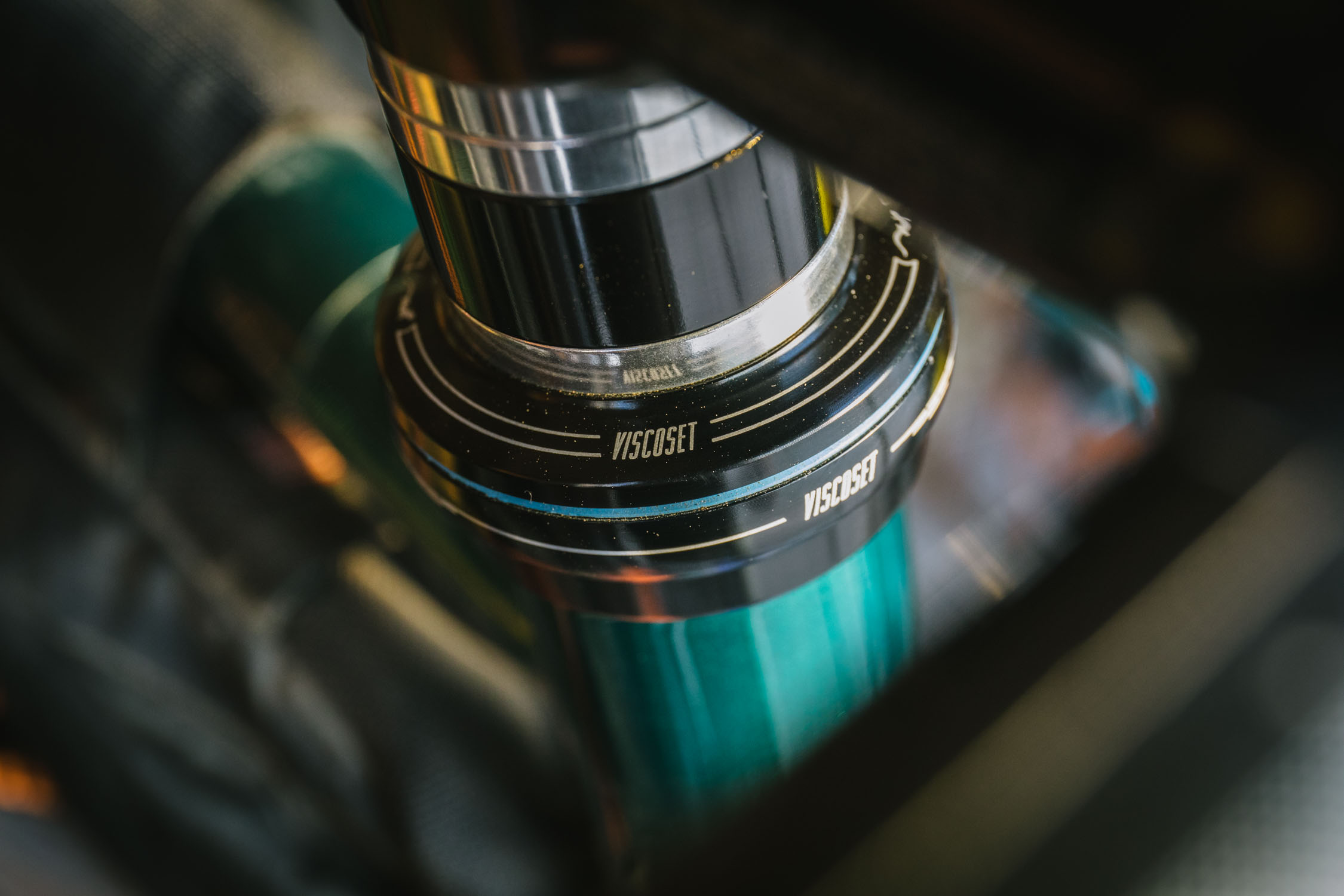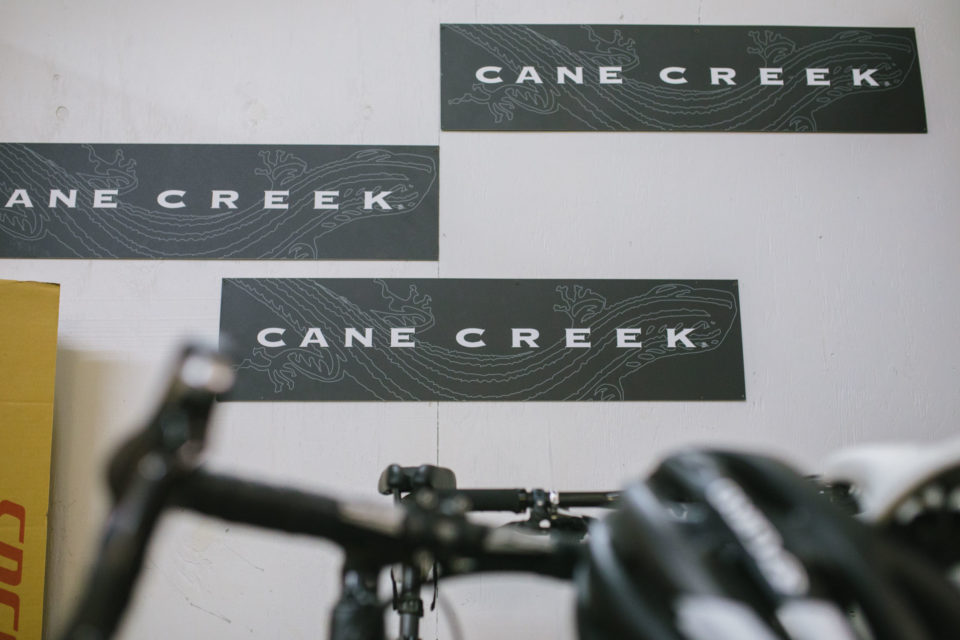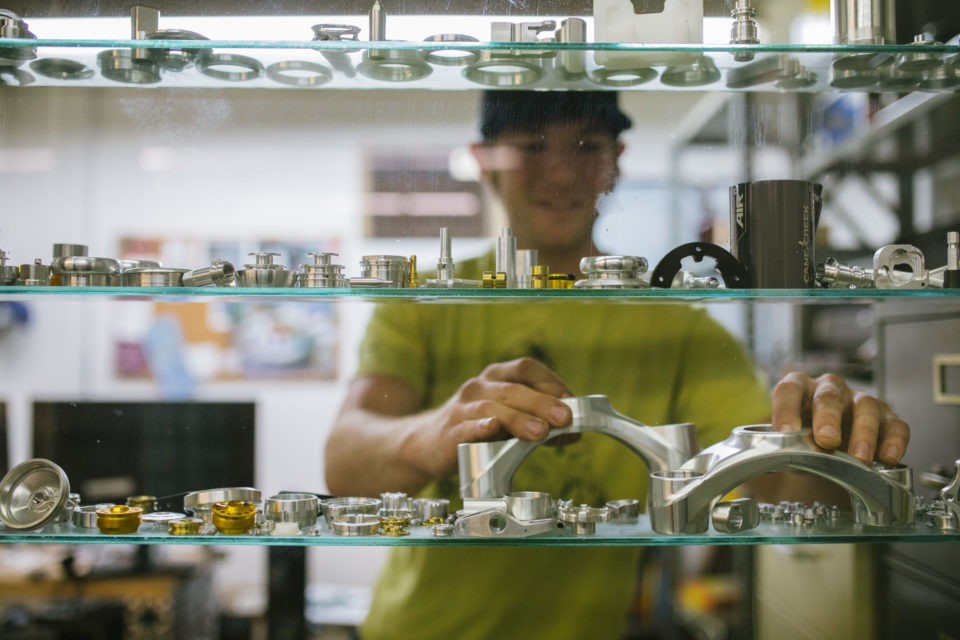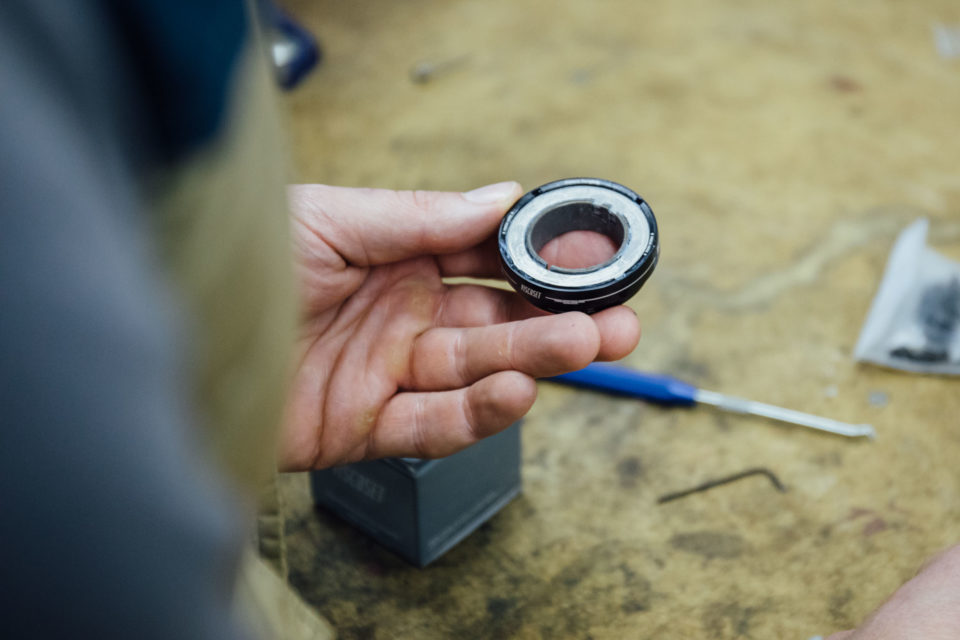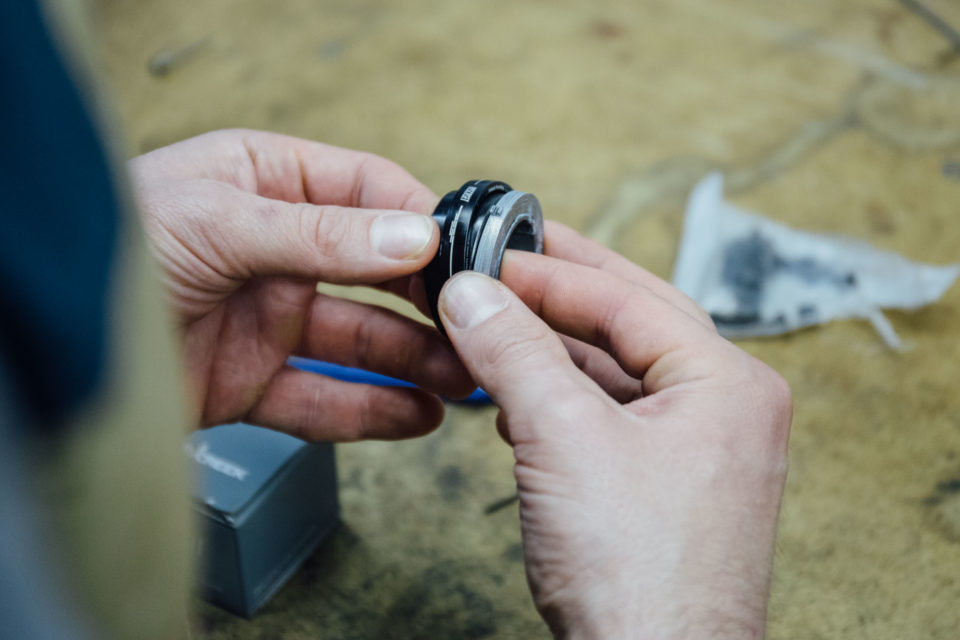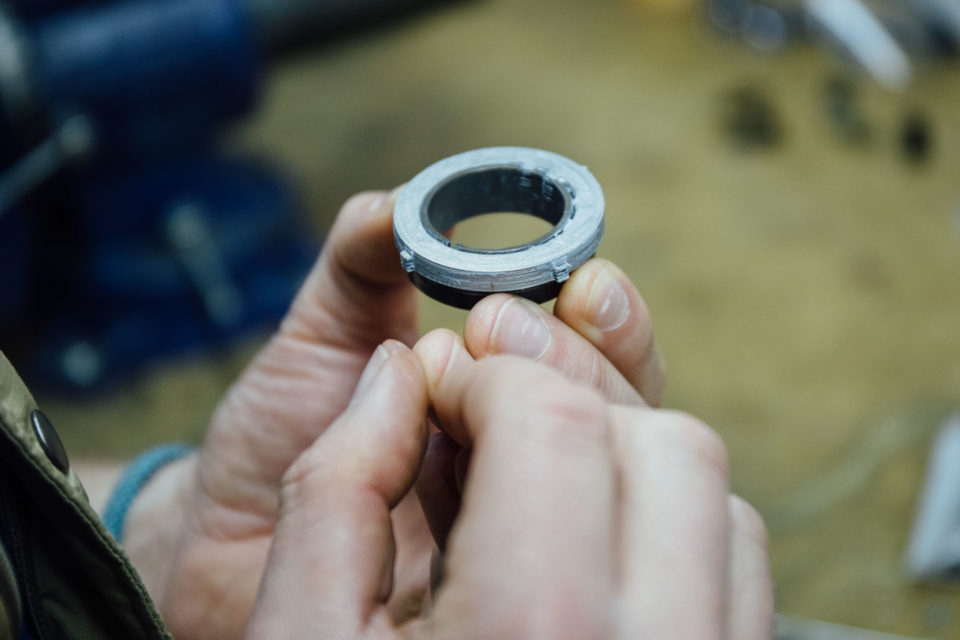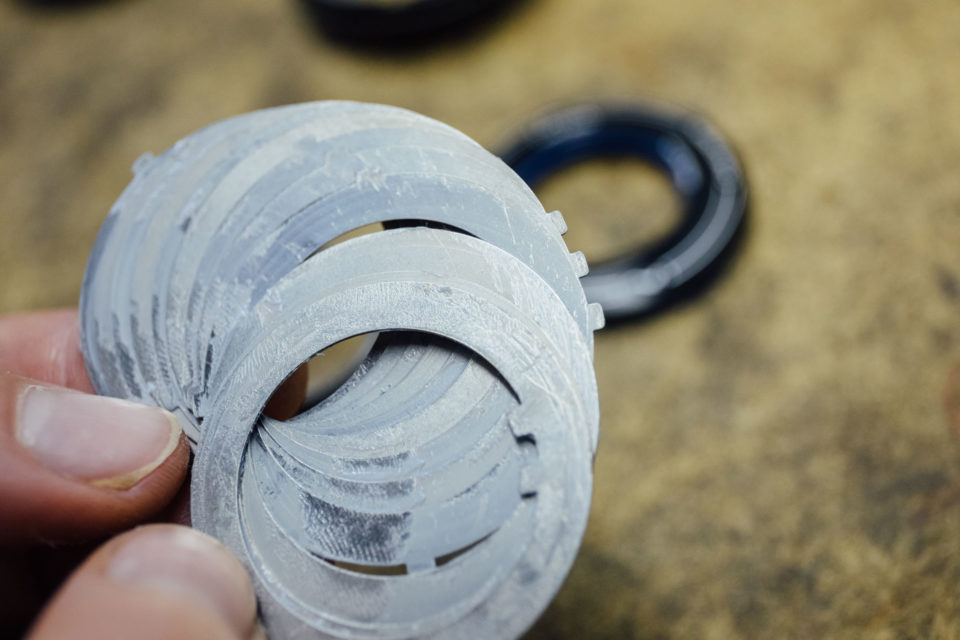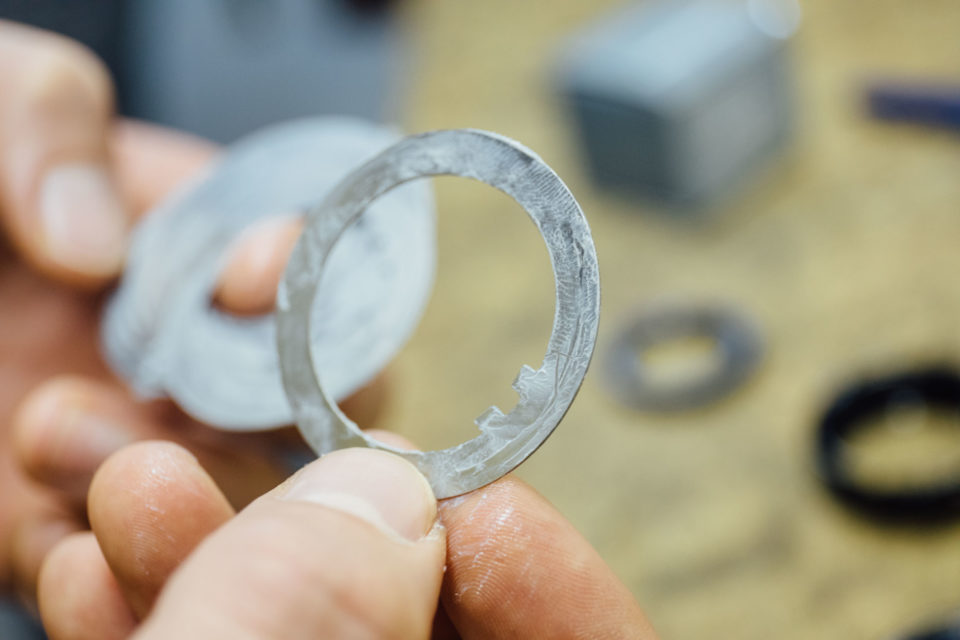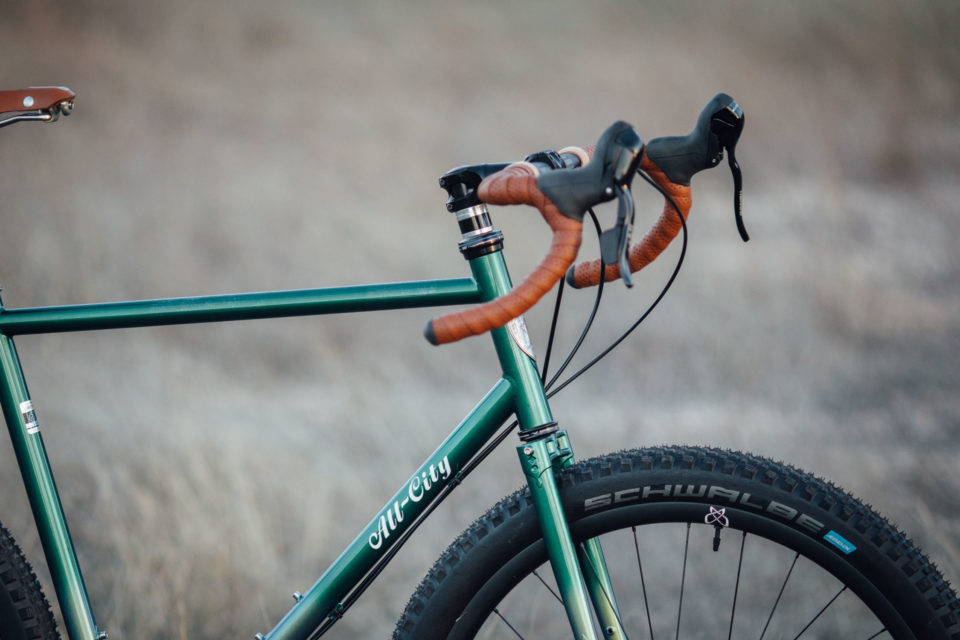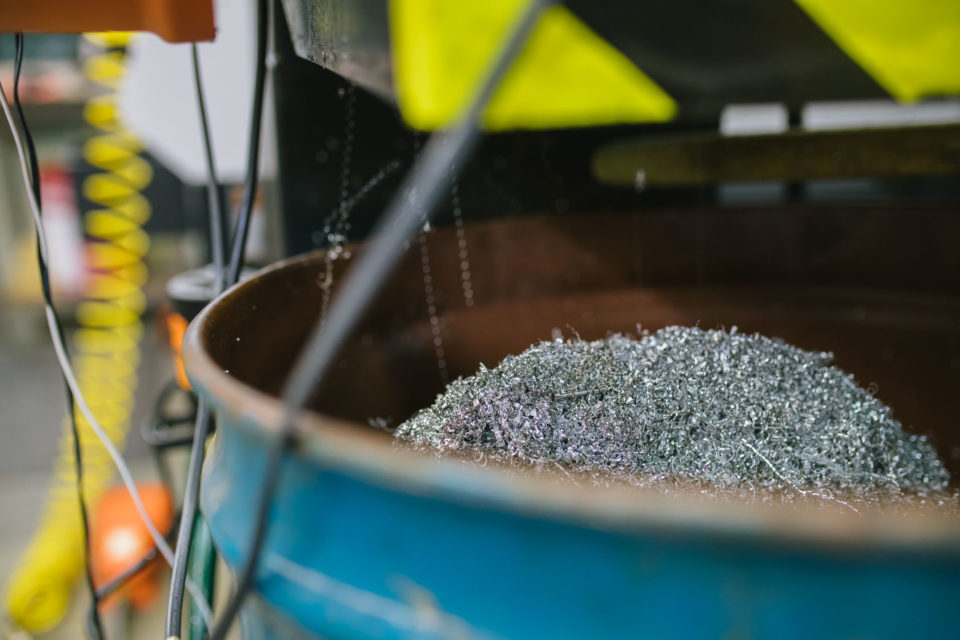Cane Creek ViscoSet Review: “That Quality Feel”
To complement a rather eclectic gravel bikepacking rig build—and try out a curious new component—we installed the Cane Creek ViscoSet, a unique headset that was originally designed for e-bikes. Here’s a look at how it works, plus our full review after giving it a go for a couple months…
Asheville, NC-based Cane Creek has been making threadless bicycle headsets since there was such a thing. In fact, they practically invented them. In 1992, just over a year after acquiring the patent for a new type of headset, employees of what was then Dia-Compe USA purchased the company from its parent company in Japan and relaunched as Cane Creek Cycling Components. Shortly thereafter, Cane Creek introduced the AheadSet—the first production “threadless headset” based on inventor John Rader’s original design. This move essentially paved the way for modern frame and fork designs. Since then, the company has been an industry leader in headset manufacturing, and has also been steadily releasing other interesting and innovative products along the way.
When Cane Creek encouraged us try one of its latest creations, the new ViscoSet—a headset the company designed to solve an E-bike steering oscillation problem—it had me scratching my head. What does a component made for battery-powered motorbicycles have to do with bikepacking? As it turns out, it offers several benefits. But before we dig into them, let’s look at what exactly led to the creation of the ViscoSet in the first place.
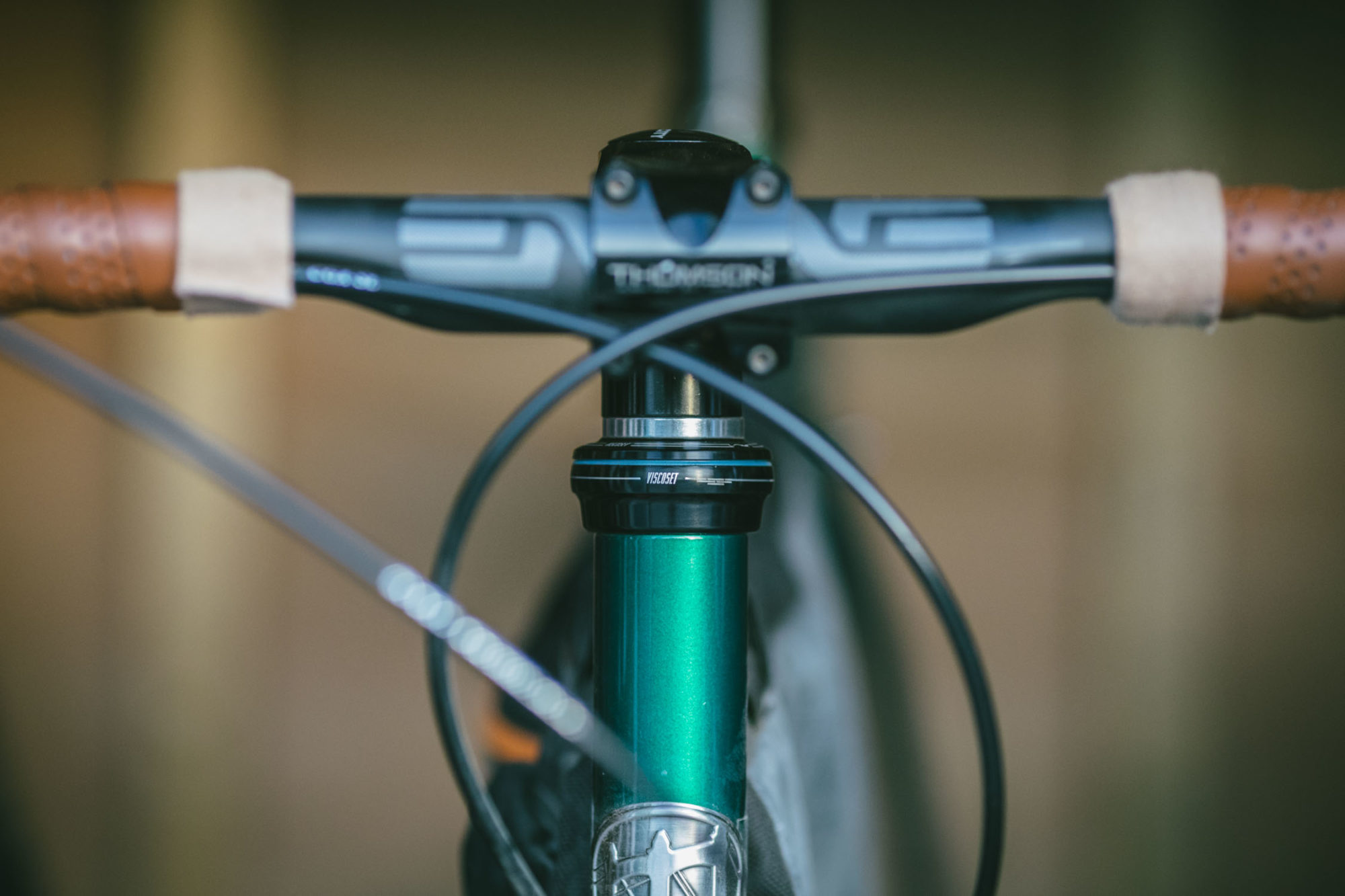
Apparently, an e-bike manufacturer approached Cane Creek for help with an issue. Their commuter and cargo e-bikes had an issue with speed wobble (otherwise known as uncontrolled steering oscillation), or vibrations that start small and get worse due to harmonics. Reason being, some e-bikes have a heavy battery that’s often positioned toward the rear of the bike. This, coupled with the rider’s weight, throws the center of balance rearward, allowing the fork and steerer to be affected by vibrations.
In a nutshell, to prevent speed wobble, ViscoSet uses specially designed damping plates above the bearing in the upper assembly. These plates provide dampened resistance to stop the oscillation before it can build to a dangerous level.
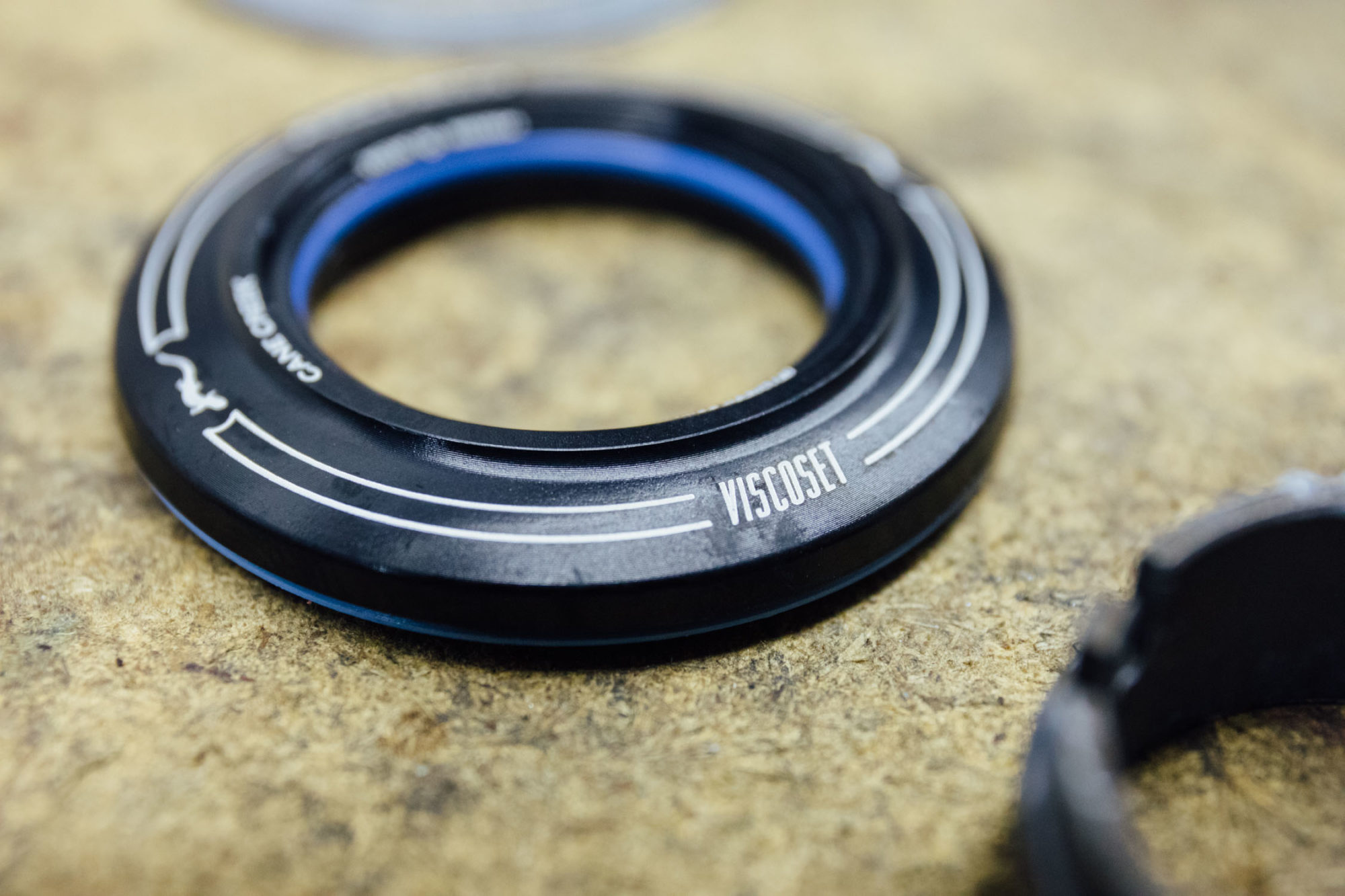
How it Works
Like other headsets, the ViscoSet has bottom and top cups that are pressed into the headtube. From the outside, you can’t really tell the difference between it and a typical headset, except that a ViscoSet has a little bit more stack height (~6mm)—22.2mm vs 16mm—and is slightly heavier: 36 grams more than the Cane Creek 110 (external cup version). Obviously, the headset cup is stationary because it’s pressed into the headtube. And, like other headsets, the compression ring clamps down onto the steerer when preloaded with the star-nut bolt.
The inside is where the magic happens. Encapsulated within the top cartridge are 12 stacked, inter-leaved plates. Six of these plates are slot-keyed to lock into the cup to keep them from rotating, while the other six are locked into the compression ring, and turn with the steerer tube. This construction essentially couples the plates to both the frame and the steerer tube. As they rotate against one another, a specially engineered damping grease (fluorocarbon gel) between each layer provides resistance and friction—in a very smooth way—and stops the oscillation of the handlebars.
So far, everything makes some sense, right? But us bikepackers, trail riders, and gravel cyclists don’t have a problem with speed wobble on most bikes, especially when loaded down. However, there are other perks, too.
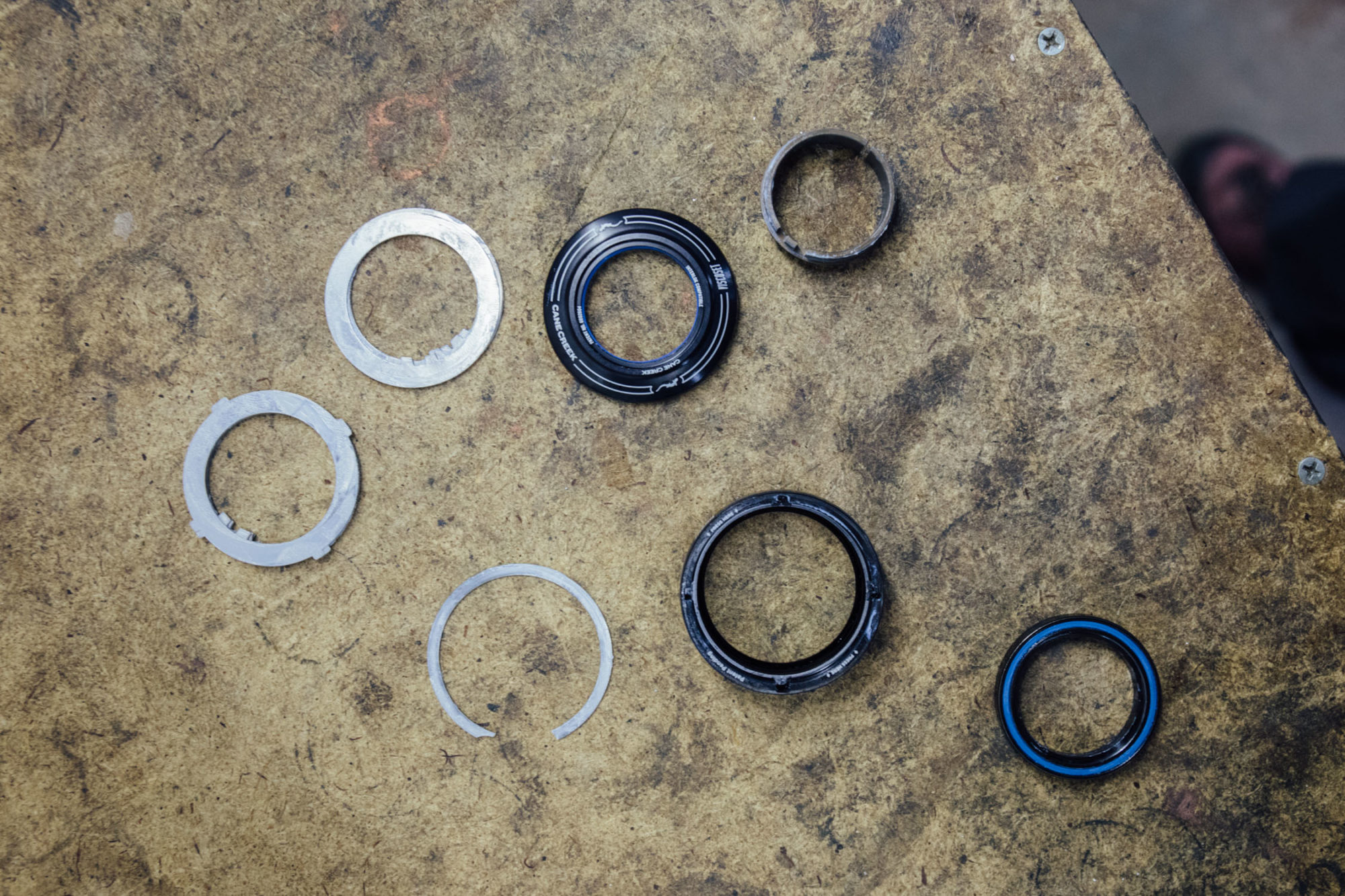
How it Feels
The ViscoSet comes in two flavors, Mid Tune and Heavy Tune. I tested the former, which offers a median level of damping. Even so, once installed on my new All-City Gorilla Monsoon, it immediately felt quite different than a typical headset. When turning the bars you can feel a noticeable damping resistance, but it’s smooth and doesn’t bind and catch like a failed or overtightened headset. It’s comparable to how some control knobs on stovetop ranges or high-end stereos have that “quality feel.” That’s damping grease at work. The ViscoSet provides a similar feel—it turns smoothly, but there’s definitely some resistance that might take a little getting used to.

For Bikepacking (and gravel, and ultra-endurance…)?
Gravel riding was the first thing that came to mind when I heard about the ViscoSet. Although not often, I have felt a little speed wobble on a gravel bike before. However, I was interested in the ViscoSet for other reasons. With narrower tire widths and steeper head angles (relative to mountain bikes), gravel bikes can be pretty twitchy when you are moving over chunky gravel, rocky tracks, or washboard roads. The ViscoSet stabilizes the front end and keeps deflections from rocks and ruts from being so abrupt. This wasn’t a big deal on the Gorilla Monsoon without a damped headset (it’s rather heavy and has 2.35” tires), but it can be an issue on lighter carbon bikes, such as the Salsa Warbird.
Either way, the additional stability was a welcome benefit. It not only makes it easier to ride no-handed, it also makes holding a line that much less work. This brings up another noticeable benefit: the ViscoSet cuts down on arm fatigue. It firms up your steering and helps you hold your line without having to tightly grip the handlebars. When you’re railing down a gravel road, you’re constantly exerting little flashes of energy to keep the front wheel straight. While I haven’t conducted an arm wattage output study on one versus the other, it’s definitely noticeable.
Cane Creek mentioned that the most common concern they hear is that people think a damped headset might slow down their steering reaction time. So far, I’ve ridden the Gorilla Monsoon on technical trails, gravel, pavement, sand, and rough dirt roads. I admit it felt a little odd at first, but I came to love it. And it doesn’t seem affect my reaction time on the technical bits, at all.
After spending time on the Gorilla Monsoon using the ViscoSet, and then climbing back on my hardtail with a normal headset, it actually feels twitchy and almost uncontrollable in comparison. When you think about it, you really only move your handlebars a few degrees while riding. Sometimes, on technical trails, there might be quick front wheel maneuvers, but generally speaking, if you dramatically turn your handlebars during a ride you might just end up on the ground. I am pretty sold on the idea that a firmer steering platform actually provides more control, in addition to stability. Having used this one, I now want a ViscoSet on all of my bikes.
The stability and fatigue reduction might be even more interesting to bikepackers and ultra-endurance racers than it is to gravel grinders (in fact, Jay Petervary is apparently using a ViscoSet on a couple of his race bikes, including the Salsa Blackborow he used for the Iditarod last year). Specifically, the ViscoSet adds stability/support that offsets the weight of a front load, such as a handlebar roll. The additional weight of a bag increases the push and pull of the handlebars to the left or right, especially when turning and leaning. You have to use energy to fight that, whether you realize it or not. Added resistance acts as a support. The ViscoSet also makes it a lot easier to push your bike, especially through snow or sand (which I did a little bit of recently). When you’re pushing, you want as much energy as possible going forward. Energy spent keeping those bars straight is wasted. It may not seem like a lot, but that energy adds up.
And there’s one more hidden perk for us bikepackers. Have you ever leaned your loaded bike against a pole (or a dinosaur—below) and the weight of the handlebar load causes the steerer to flop over, turning your wheel and sending the bike to the ground? How about when you are trying to balance it to load something in your bags and the same thing happens? Having a damped steerer pretty much eliminates this.

- Types available External Cup and Zero Stack
- Weight ~100 grams
- Place of Manufacture NC, USA
- Price $80
- Manufacturer’s Details CaneCreek.com
Pros
- Offers additional stability and control that’s excellent for gravel, mixed terrain, rocky downhills, and more
- Eliminates arm fatigue from a twitchy or chattery front-end, or added bag weight on long pedaling days
- Helps eliminate “fork flop” when packing bags
- Provides additional solid stack height
Cons
- Slightly heavier than other headsets
- It’s unclear what the long-term wear scenario will look like; we’ll update this review once it has a couple thousand miles on it
- Doesn’t come in other colors
Wrap Up
As mentioned in the last section, I’m sold on the ViscoSet. I wish all my bikes had one installed. Reduced arm fatigue, a more stable ride, and more steadiness when packing and unpacking the bike are all great benefits. However, I also really appreciate the feel of it. With the added resistance, it simply has a high quality feel.
I’ve only put around 400 miles on this ViscoSet, so I’ll make sure to update this down the road when it’s gotten a solid amount of mileage.
Please keep the conversation civil, constructive, and inclusive, or your comment will be removed.






